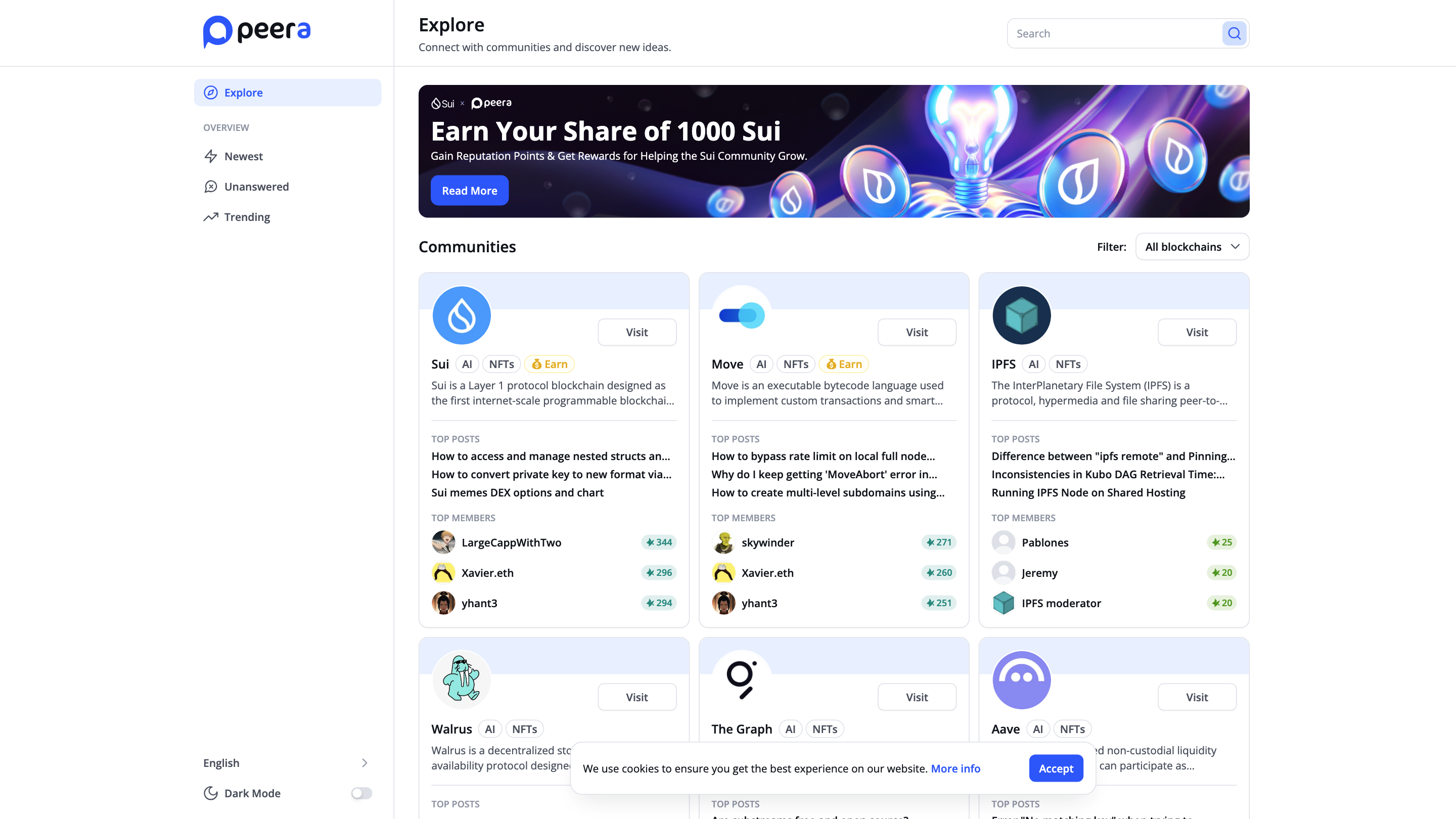Peeranha
Open siteEducation & Translation
Introduction
A decentralized Q&A platform on blockchain for community-driven knowledge sharing.
Peeranha Product Information
SEAL — Decentralized Secrets Management (DSM) is a Web3 privacy-first layer that enables onchain access control for sensitive data without relying on centralized backends. Built for the Move/Sui ecosystem, SEAL lets you encode dynamic access rules directly into smart contracts, while handling encryption, key management, and decryption approvals in a decentralized, auditable manner. Data privacy remains client-controlled and storage-agnostic (IPFS, Arweave, Walrus, etc.).
What SEAL does
- Provides onchain-defined access logic that gates who can decrypt data.
- Uses Identity-Based Encryption (IBE) to encrypt data to identities defined by access rules rather than specific wallets.
- Employs a threshold-based Key Server model to derive decryption keys, avoiding single points of failure.
- Performs decryption client-side, ensuring servers never see decrypted data.
- Works across storage backends without imposing storage constraints, focusing solely on who is allowed to view the content.
- Plans to expand with MPC and enclave-based setups for stronger guarantees.
How SEAL works (high level)
- Onchain access rules (Move contracts on Sui): You write a seal_approve function that encodes your decryption conditions (e.g., time-locks, NFT ownership, DAO voting outcomes). The contract acts as the gatekeeper.
- Identity-Based Encryption (IBE): Data is encrypted to an identity string (e.g., wallet address, a time-based rule, or a role like dao_voted:proposal_xyz). Decryption happens only if the onchain gatekeeper approves the identity.
- Offchain Key Server (distributed): The Key Server holds the master secret key and issues derived keys only when onchain conditions are met. It can operate in a threshold mode (e.g., 3-of-5 servers) to remove central points of failure. Future MPC/TEE options are planned.
- Client-side Decryption: Once a derived key is provided, decryption happens on the user’s device. This ensures data privacy even if storage layers are compromised.
Architecture (concise mental model)
- Onchain: seal_approve in Move contracts defines dynamic access logic.
- Offchain: Identity-Based Encryption with a distributed Key Server managing key derivation and approvals.
- Client: Decrypt data locally after receiving a derived key.
- Storage agnostic: SEAL does not control where data is stored; it only enforces access.
Use cases
- Gated content: Only NFT holders can access a premium tutorial.
- DAO-controlled data: Sensitive files decrypt only after a DAO vote.
- Time-locked metadata: Content decrypts after a specified date.
- Cross-chain privacy: Access logic travels with contracts, not centralized policies.
The Team
- Led by Samczsun, a known security figure in blockchain research and auditing, bringing credibility to SEAL’s privacy-focused approach.
How to get started
- Deploy a Move contract with seal_approve to enforce your access rules on Sui.
- Encrypt data to an identity that reflects your access policy.
- Run a threshold Key Server (or MPC/TEE in future) to derive decryption keys when seal_approve passes.
- Decrypt client-side to preserve privacy and control over data.
Safety and considerations
- Access logic is auditable and immutable once onchain.
- Client-side decryption ensures data privacy even if the storage layer is compromised.
- Threshold and future MPC/TEE plans reduce centralized trust and improve resilience.
Feature highlights
- Onchain-defined access rules via Move contracts (seal_approve) for dynamic, auditable control
- Identity-Based Encryption (IBE) enabling encryption to identities rather than specific keys
- Threshold-based Key Server for decentralized, fault-tolerant key management (e.g., 3-of-5)
- Client-side decryption ensures data remains private and never exposed to servers
- Storage-agnostic design; SEAL focuses on access control, not data storage
- Planned support for MPC and enclave-based (TEE) architectures for stronger guarantees
- Designed for Web3 dApps, DAOs, and cross-chain privacy needs
